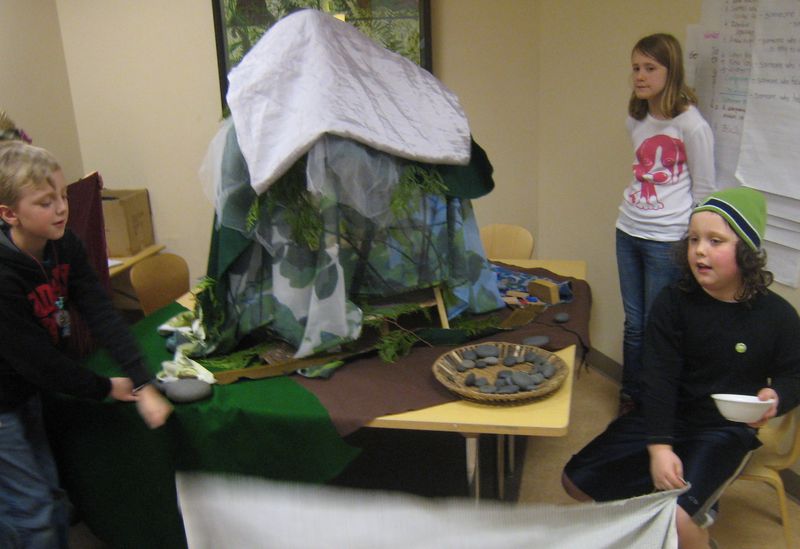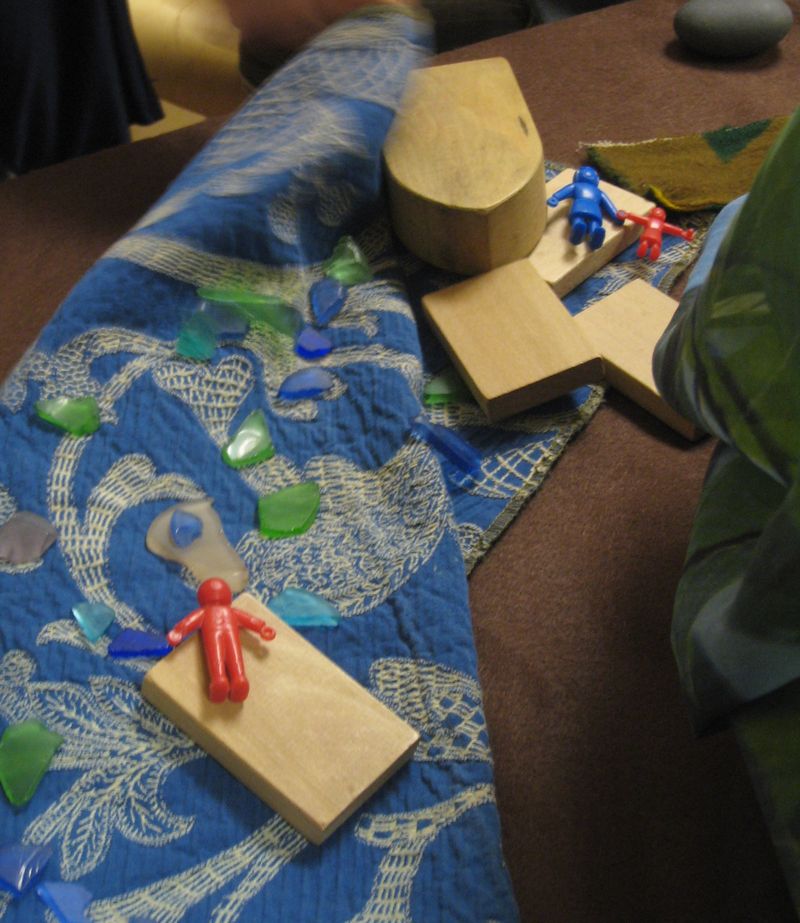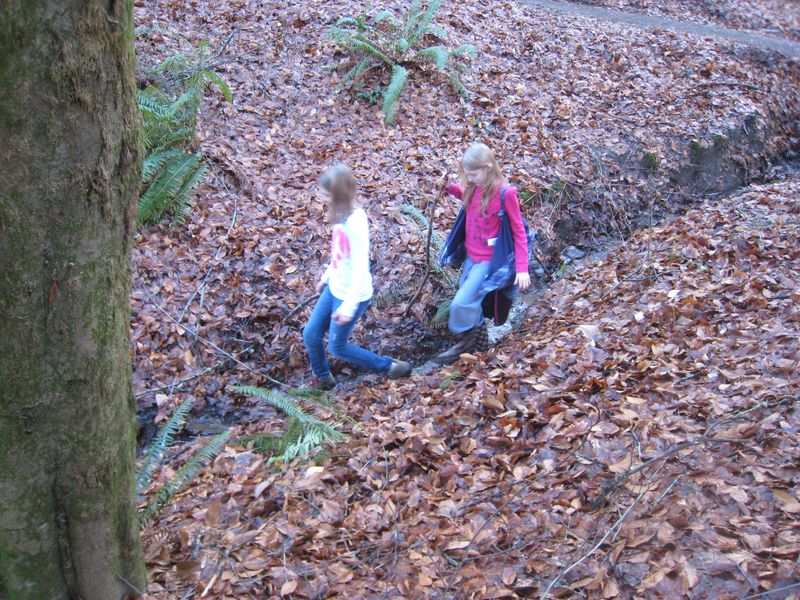Becoming protagonists in our own story
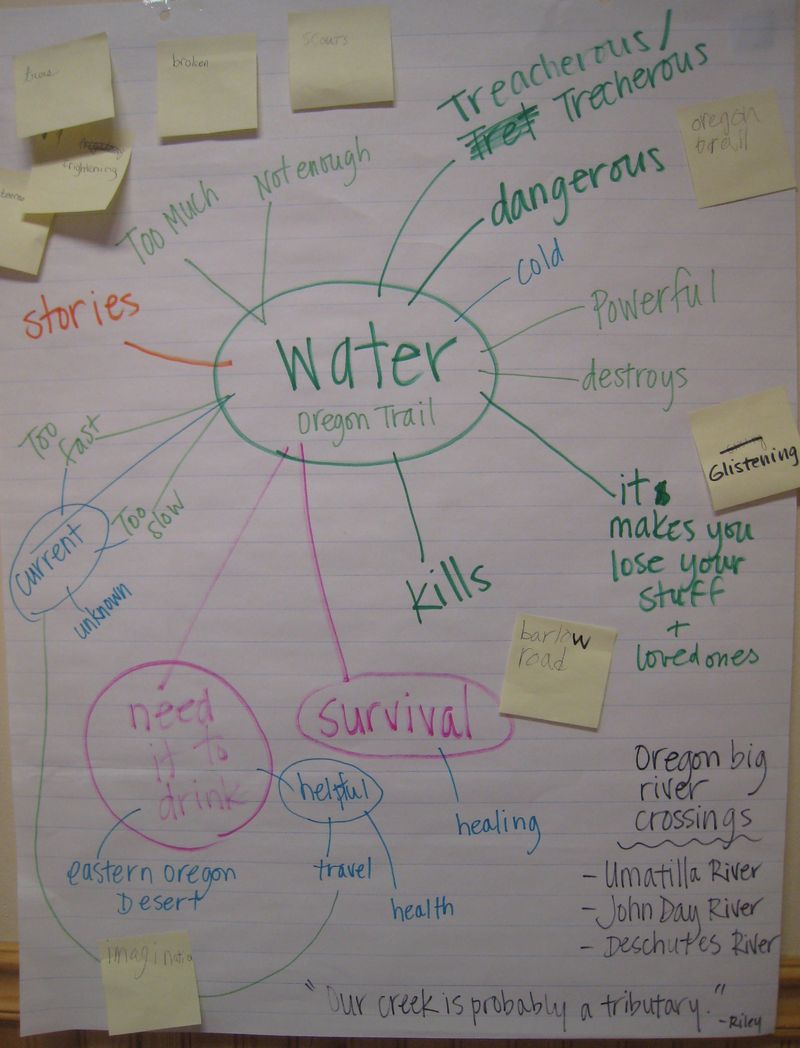
Wednesday, February 1, 2012
Something magical happened today. The entire learning community stepped into the story of Oregon History and we all became protagonists in the drama. How did that happen today?
We had materials all over the tables from yesterday, when we were constructing the three sections of the Oregon Trail that we have been studying.
We heard another story from The Water Seeker by Kimberly Willis Holt where the pioneers cross the Snake River and two men drowned.
We discussed the power of water again by cracking open WATER and hung it on the wall.

AW shared a connection: My grandparents live by the Umpqua River. It’s so fast and dangerous. A boy drowned in the river. He lost his footing and it just sucks you in. His body popped up downstream and it was all swollen and puffy.
Next the students each got a copy of a map of Oregon with the Trail marked on it. They had a chance to highlight the route from Farewell Bend to Oregon City – via both the Columbia River and the Barlow Road. We noticed that there were three rivers yet to cross in Oregon: the Umatilla, the John Day and the Deschutes.
Then, the Barlow Road and the Eastern Oregon groups prepared to present their renditions of their parts of the Trail to the class.
Eastern Oregon
MM: We started out at the Burnt River Canyon and then we went to the Blue Mountains.
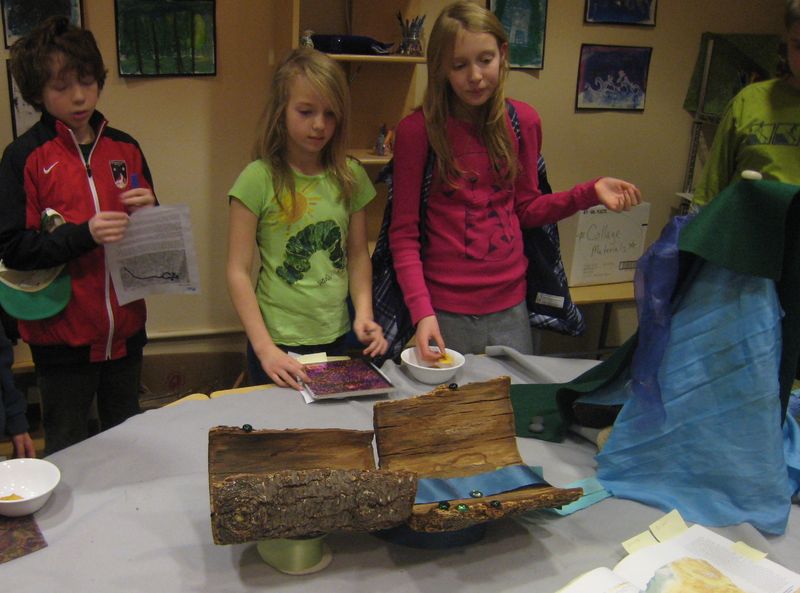
HH: This is the prairie and the Umpqua River.
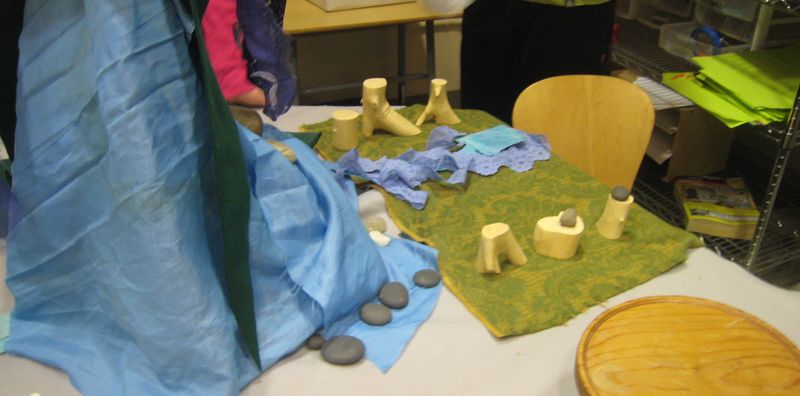
RC: Does the blue cloth represent the Blue Mountains?
EY/MM: Yes.
RC: Are those trees? (on the prairie section)
EY: Well, they’re bushes and willow trees and cottonwoods.
Levia: Are there trees on the Blue Mountains?
MM: Junipers.
EY: Sagebrush
Levia: When you get a mental image of the “Oregon Trail”, what do you see? Do you think there was a trail or a road there?
MM: It’s just a map.
EY: Maybe there are markers on the trees.
Barlow Road
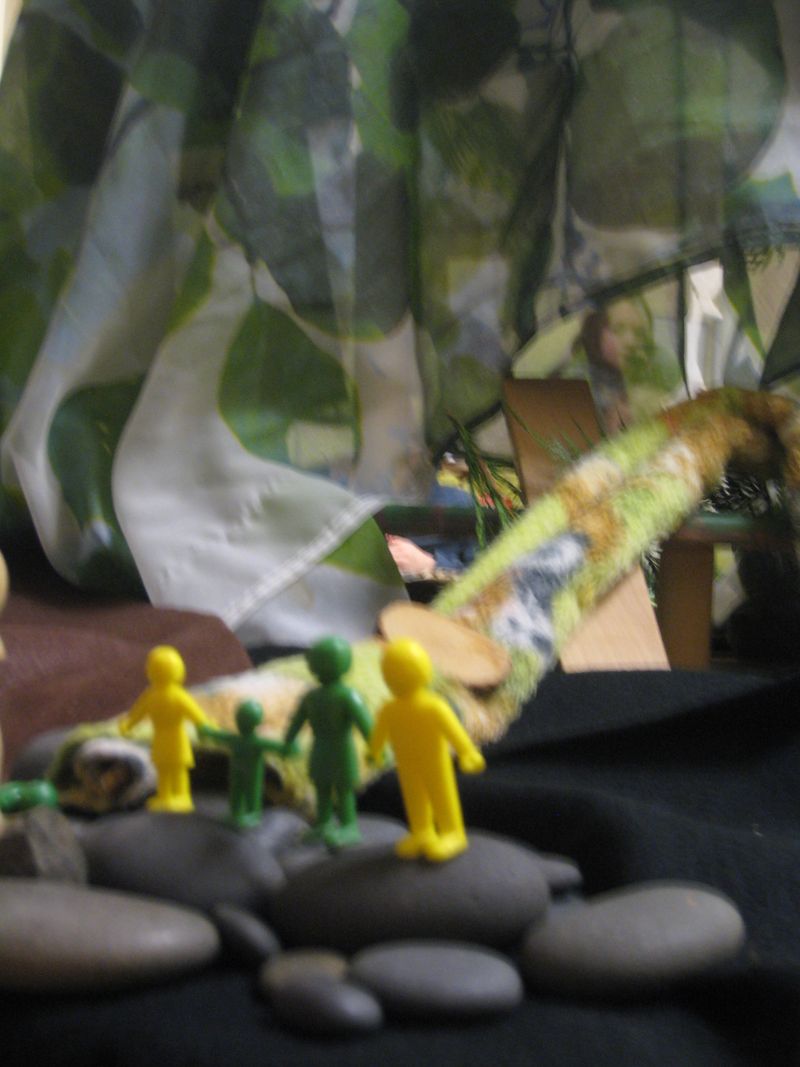
This is the Barlow Road around the summit of Mount Hood. Over here is an ad for what happens to you if you take the Columbia River.
SBM: Did people ever try to go over the summit to try to avoid the tolls?
RC: It’s a very interesting, little, shrunken world. Do you know Santa Land at Macy’s where they have the train? It reminds me of that.
Levia: I am wondering who paid for that ad about the dangers of the Columbia?
DO: The people who get the money for the Toll Road.
AW: It’s a smart ad.
Levia: Who are they?
DO: The Barlows? Maybe the government?
?: Is the Barlow Road safer than floating the Columbia River?
MM: No, not for the carts and the oxen. Those are steep, sharp trails and it was dangerous to cross.
And more wonderings from children: Why didn’t they go north of Mount Hood?
Why didn’t they go wider so it would be flatter?
How much did the tolls cost?
SBM: 25 cents to $2.50.
Columbia River
After they showed us the structure, KB said, “Now we’re going to make the Columbia River come to life!”
KB: This is what it would be like if it started to pour. Your raft would be tipping and you would be grabbing on trying not to fall in.
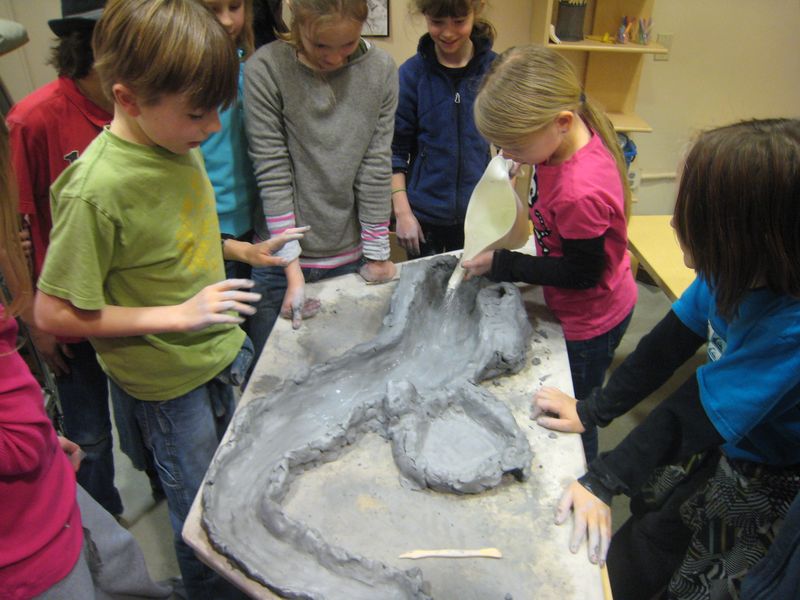
Levia: I am wondering if creating the Gorge with clay helped you envision how it was formed? Do you want to share that story with the class?
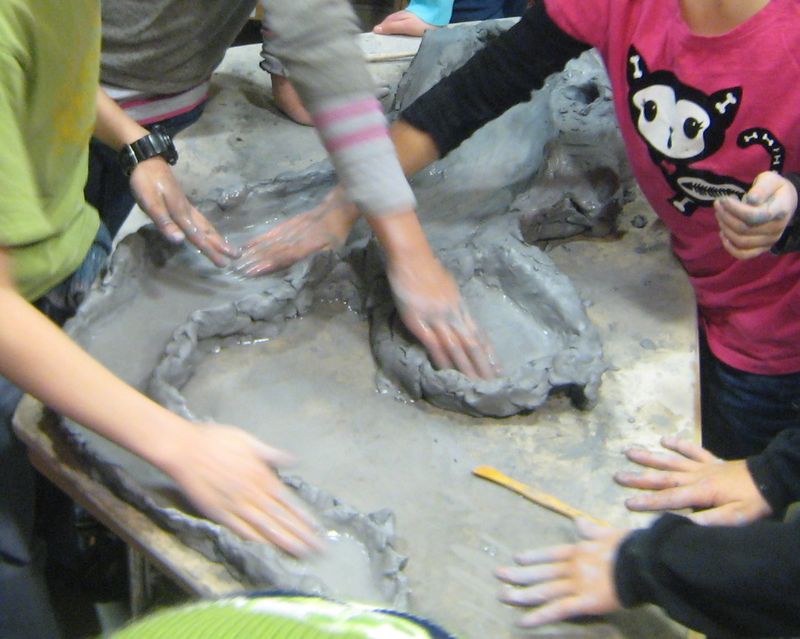
MC: Pretend this dam is make of ice and there is a TON of water behind it.
RC: More than half of Lake Michigan
JL: Wow.
MC: Suddenly, this thing melted or burst and whoosh! It flooded this whole place. Then it kept happening, freezing and bursting, freezing and bursting and gradually formed getting deeper and stuff.
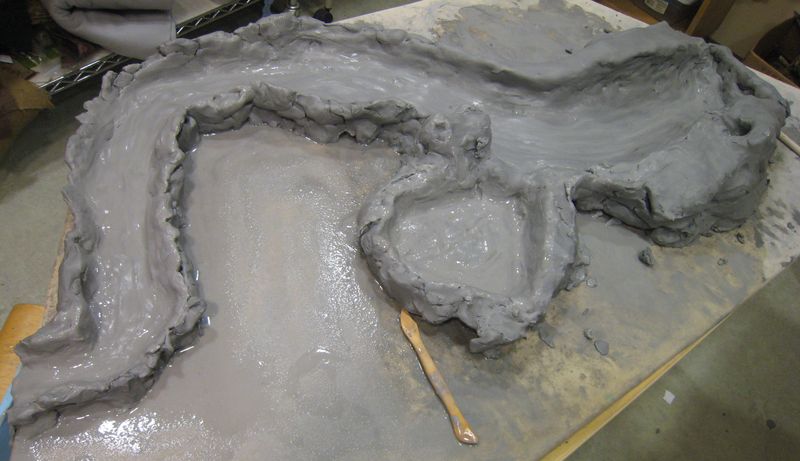
RC: That was 12,000 years ago!
KB: The Columbia Gorge has a lot of big, tall cliffs. Now you can park your car and walk up and look down and see the river. Back then when families would look up from the river, they would see the cliffs. They would say, “Wow! That’s high!”
_____________________________________
During the morning, MM kept asking me, “are we going to do the Oregon Trail on our hike today?”
It was time. First we would clean up all of the collage materials, and then we would be the scouts who went ahead of the wagon train to check out where the trail should be. For us, the challenge was to find The Dalles out in the arboretum. It had to be a place where you could see a choice to go up and around the summit of Mount Hood (the Barlow Road) or to go down into the Gorge and float the Columbia River.
At this point, I shifted into character and said: We are headed for a scouting expedition today to find this place called The Dalles and the two trails we will have to choose between when we get there. As you walk through that door, you will have to make a choice: will you join me, in 1841 on this scouting mission, or will you join us in 2012 as observers? If you choose to join us as a scout, there are some things you must know. You will need to know how to take care of yourself on the trail. Every scout will carry their own provisions, know how to find food in the wilderness, and be able to defend themselves from any possible attack, human or animal. Think carefully and choose wisely.
The clean up was faster and more productive than any clean up session I have seen. Then, I stood at the door and checked in with each student individually. Are you a scout or an observer? Everyone chose scout. So out into 1841 we went.
Leaving the parking lot, the lead scouts broke into a run.
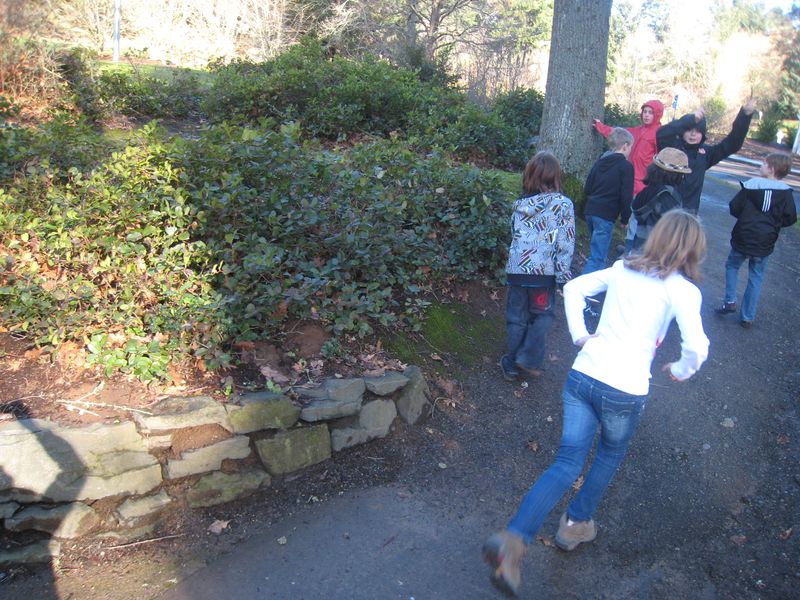
They were ready. Along the way they picked up weapons and other useful tools, like walking sticks and pick axes.
MG had an idea from the outset that The Dalles would be where we considered putting Boston last year. So we headed in that direction. On the way, at the first crosswalk, MM stepped in front of all of us and demanded a toll. We did not have money, so we had to think fast. First we convinced him that we were one party and would only have to pay one toll. Then, finally, someone decided that pine or fir cones were currency. MM accepted them and we moved on.
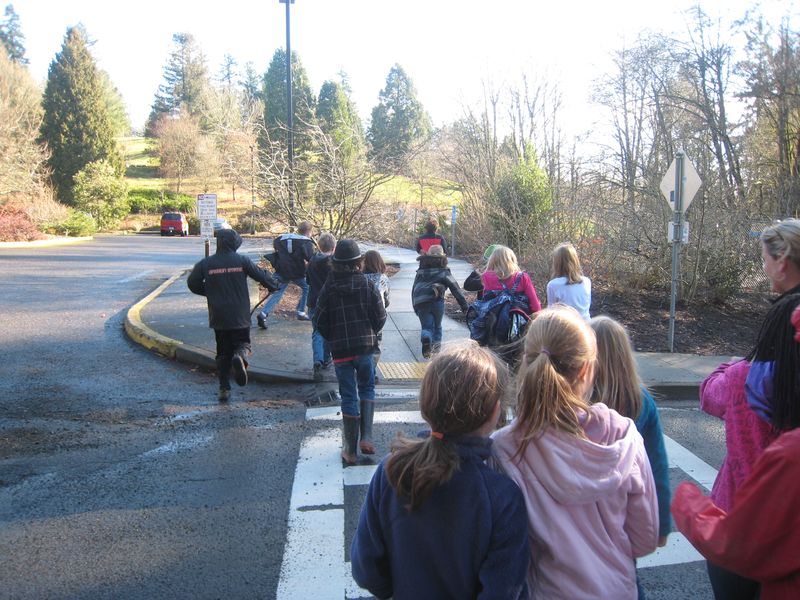
We encountered some other (rogue?) toll collectors along the way. We headed uphill on the stairs and stopped a couple of times to wonder if we might be at The Dalles, but it wasn’t right.
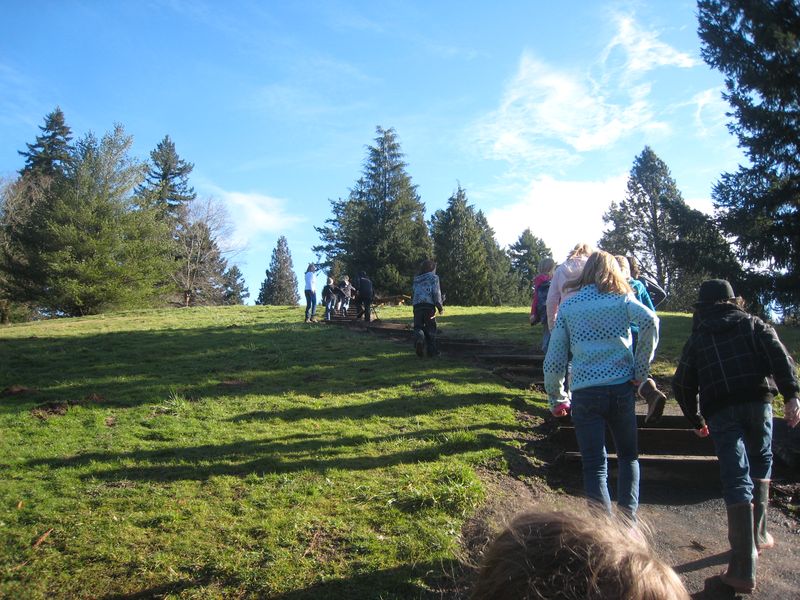
On the way around the water tank, we realized we were at a “summit” that could be a great Mount Hood. Just on the other side we saw our chance to really scout. A steep, muddy hill that we had to traverse. Maybe we were headed down toward the river?

The first group to get down (MG, DO, and MM) yelled up, “There’s a creek down here!” Now they had my attention. I scrambled down the hill and sure enough, there was a creek. I think we were at the head of the Birch Trail, behind the Visitor’s Center. Now we could see it – Mount Hood and the Barlow Road up from where we were and the creek, the Columbia River below. We must be at The Dalles!
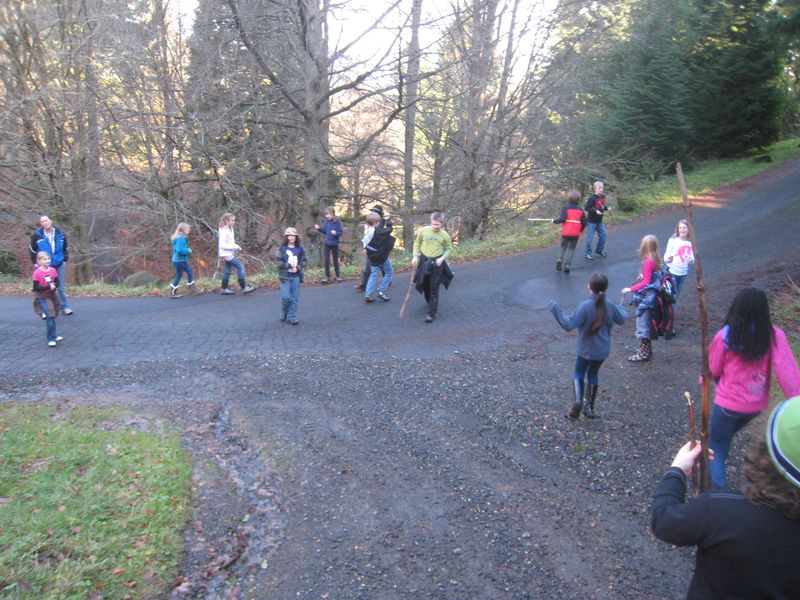
The scouts went immediately into the creek to explore.
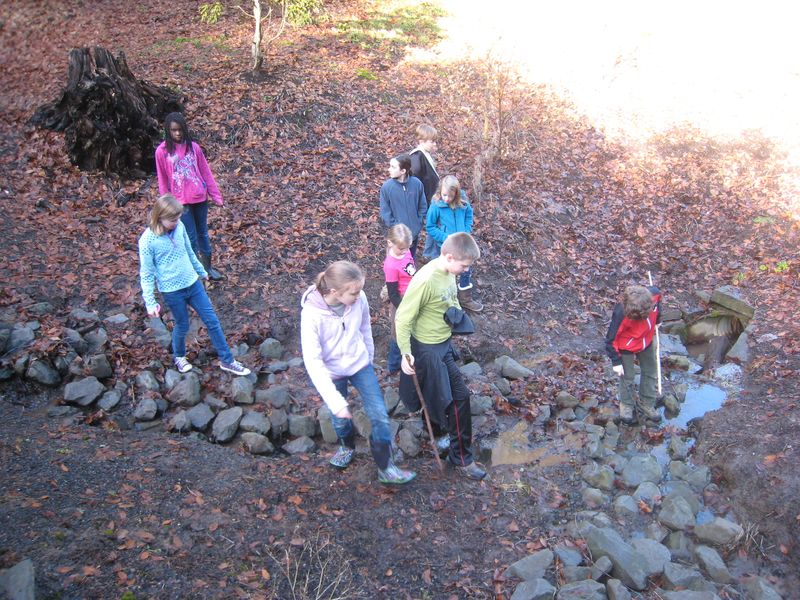
Someone had the great idea to keep going – to follow our Columbia River. As many creeks in the arboretum do, this one disappeared into an underground pipe. Still the scouts headed “downstream”. They had just killed a wolf and were looking for a place to build a campfire and eat some wolf meat when I saw what looked like a drop off where a pipe outlet could be.
Levia: Anyone want to scout to see if that pipe empties out down there with me?
Of course the lead scouts did, leaving MC to carry the dead wolf. Two steps later we heard the familiar sound of running water. It was the pipe discharging to an above ground creek. Now this was the Columbia, waterfalls and all.
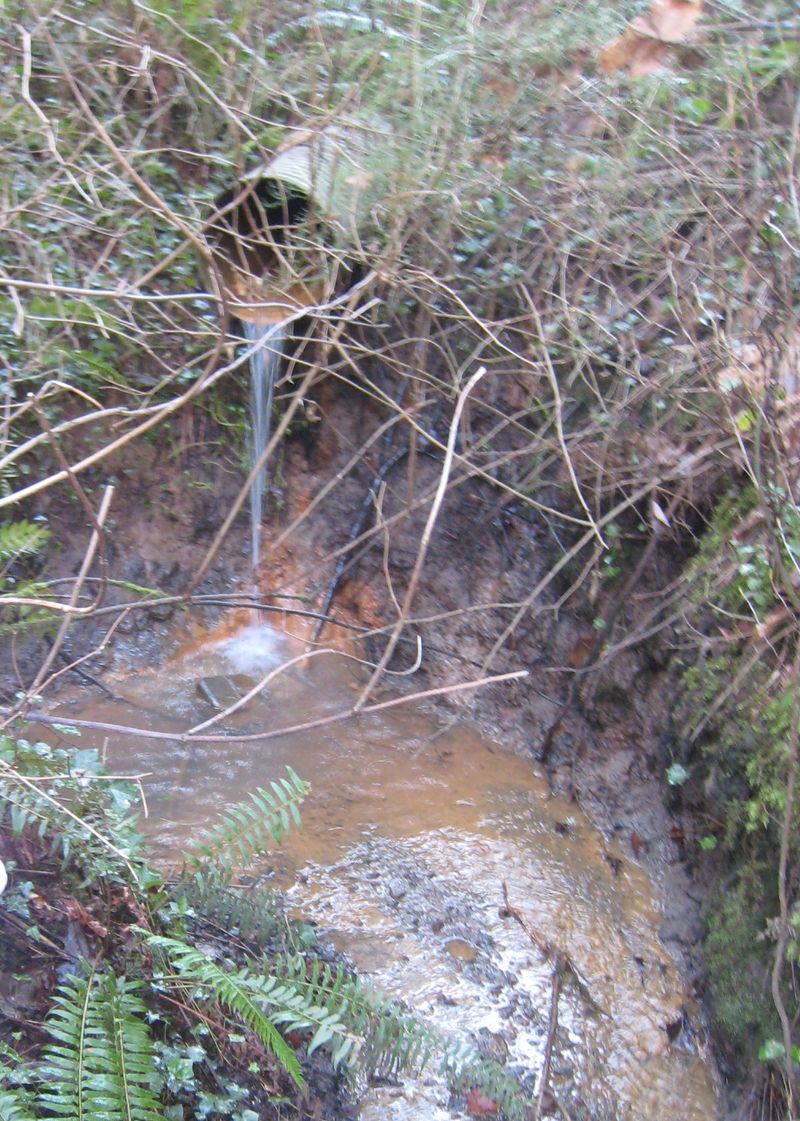
MM: I found an island! Come down here and we’ll make a campfire.
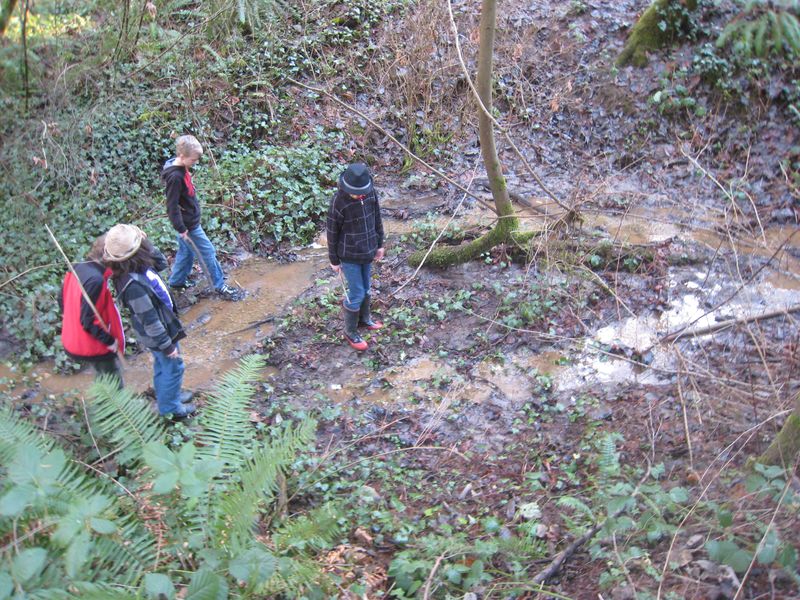
We did stop here, make a fire and roast the wolf.
Also along the way we found forts (residential houses), a tribe of unfriendly Blackfoot Indians (did they really live on Mount Hood?)

On the way back, MM found, “A new species of flower.” He brought it back to class and put it in a vase.

All in all, an extremely successful scouting mission.
____________________________________
What did happen today that let this story come to life in our learning community?
How did it happen that we all became protagonists in the story?
How did our shared schema for Oregon history support our drama?
What does it feel like to be part of a learning community where it is safe to take on a persona, interact with anyone in the community, and, in the drama, be someone you’re not, even if that means disagreeing with someone?
What does a learning community look like where the teachers and student co-construct curriculum when they are willing to be playful and engage in the natural world?
How did the opportunities to do deep research, share stories and experiences, and construct understanding through materials and the arts make this magical day possible?
Where will all of this energy lead us?

